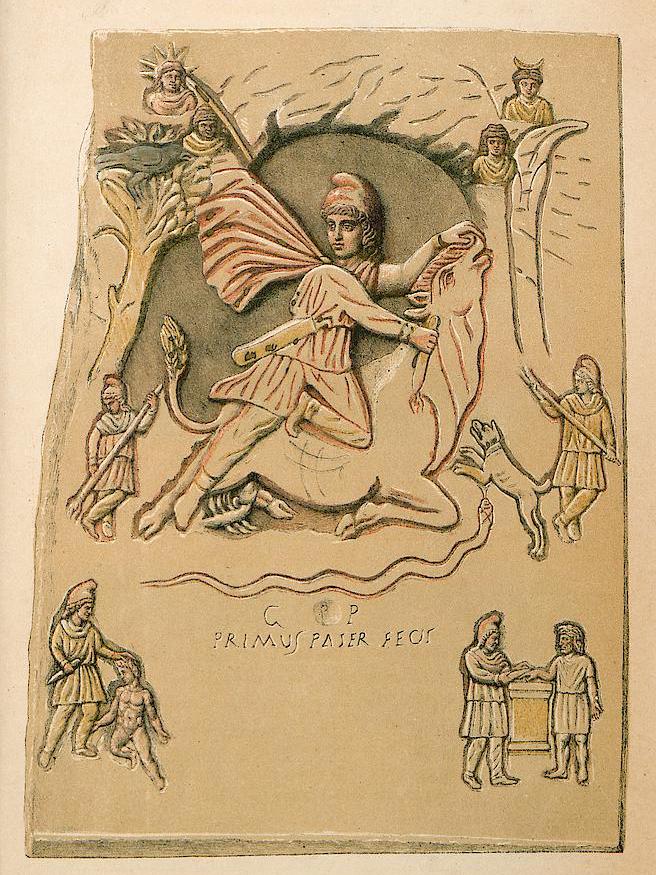Tauroctony relief of the Esquiline
The full article is reserved for our members.
Log in or create a free account to access the entire site.
The relief is worked as an engraving. Mithras in Eastern attire with a sheath at his side, kills in a cave the bull whose tail ends in ears. Two strips on its body seem to indicate a large band. The dog with collar near the wound; the serpent creeps over the ground; the scorpion at the testicles. Near the cave on each side a tree; the raven is perched on the branches of the left one. On either side of the main scene Cautes (r) and Cautopates (l) in Eastern attire; cross-legged.
In the l. upper corner the dressed bust of
…


